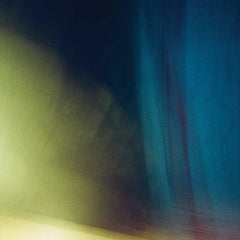クイックビュー
{"id":8692121927930,"title":"John Tchicai, Don Cherry, Sahib Shihab \/\/ Beautiful United Harmony Happening \/ The Education of an Amphibian LP","handle":"john-tchicai-don-cherry-sahib-shihab-beautiful-united-harmony-happening-the-education-of-an-amphibian-lp","description":"\u003cp\u003eジャズ作家John TchicaiとDon Cherry、Sahib Shihabが、2024年12月にイタリアの実験レーベルArga Marghenから300部限定でリリースした共作レコードです。\u003c\/p\u003e\n\u003cp\u003eスプリチュアル・ジャズ2曲を収録。インサート付属。\u003c\/p\u003e\n\u003cp\u003e以下、レーベルによる解説です。\u003c\/p\u003e\n\u003cp\u003e\u003cem\u003e\"Alga marghen \/ formaliberaは、デンマークの作曲家、マルチ・インストゥルメンタリストJohn Tchicaiの作品を記録したシリーズの第一弾を発表できることを大変嬉しく思う。この新しいLPは、ドン・チェリーとの 「Beautiful United Harmony Happening 」とサヒブ・シーハブとの 「Education Of An Amphibian 」という2つの未発表音源を収録している。\u003c\/em\u003e\u003c\/p\u003e\n\u003cp\u003e\u003cem\u003eTchicaiはニューヨークで目覚ましい4年間を過ごした後、1966年7月に母国デンマークに戻った。その短い期間に、彼はニューヨーク・アート・カルテットやニューヨーク・コンテンポラリー・ファイヴといった小さなフリージャズ・アンサンブルや、アルバート・アイラーとの 「New York Eye and Ear Control 」やジョン・コルトレーンの 「Ascension 」といったアルバムで、ソロ、集団即興、作曲の関係を再定義し、拡大することに貢献した。どのアーティストのキャリアにおいても、最も肥沃な時期のひとつであったことは間違いない。しかし、ヨーロッパに戻ると、Tchicaiは主に(それだけではないが)大編成のアンサンブル音楽に目を向けた。ニューヨークでのブレークスルーは失われることなく、大編成の文脈に移され、さらなる探求の道が開かれた。\u003c\/em\u003e\u003c\/p\u003e\n\u003cp\u003e\u003cem\u003eTchicai八重奏団による 「The Education of an Amphibian 」は、「Komponist Udøver Ensemble」、すなわち 「Composing Improvisers Orchestra 」の最初の試みであり、即興と作曲の境界をさらに曖昧にするアプローチである。1966年10月に録音されたこの作品では、Tchicaiが作曲家であり、指導者であり、サウンドのオーガナイザーであり、現代クラシックとアフリカの影響から引き出された幅広い音楽的ボキャブラリーの探求者であることが示されている。Tchicaiはこのバンドを集団として構想したが、彼の感性が色濃く反映されている。バンドメンバーが演奏する緩やかな枠組みは彼が決めた。彼が作曲したテーマは、最も抽象的なフレーズでさえ叙情的に感じさせる。これらの簡潔で反復的なメロディーは、演奏を区切り、構成する。\u003c\/em\u003e\u003c\/p\u003e\n\u003cp\u003e\u003cem\u003e作品の多くは、まさに即興の作曲である。演奏の冒頭を飾る緊密な声のハーモニー、メロディーを供給するドラムのモチーフ、ソリストを支える繊細な背景素材は、作品を終結へと導く要素として機能する自発的な創作である。各楽器が織り成す高次の対位法に参加するエネルギッシュなグループ即興は、コンサートのハイライトである。\u003c\/em\u003e\u003c\/p\u003e\n\u003cp\u003e\u003cem\u003e個々のソリストも、オクテットの緊密な即興アンサンブル・ワークも、グループのユニークなサウンドに等しく貢献している。トランペッターのヒュー・スタインメッツは、この時期Tchicaiと頻繁に共演しており、バンドに強いジャズ・センスをもたらしている(彼はこのレコーディングの年にデンマーク・ジャズ・アカデミーからデンマークの年間最優秀ジャズ・ミュージシャンに選ばれている)。1964年にコペンハーゲンに移住したアフリカ系アメリカ人のサックス・フルート奏者シャヒブ・シャハブは、バップを取り入れたクレプスキュラーなフルート・ソロを聴かせる。ジャズではほとんど耳にしたことのないクラシック楽器、ハープシコードのピエト・クイテルスの爆発的なソロは、作品に驚くべき新しい音色を挿入している。打楽器奏者たちは、従来のジャズとは全く異なる機能を果たしており、「スウィング」する義務はなく、アンサンブルのパッセージでメロディックに、あるいはテクスチャー的に機能することが多い。\u003c\/em\u003e\u003c\/p\u003e\n\u003cp\u003e\u003cem\u003eこの『ビューティフル・ユナイテッド・ハーモニー・ハプニング』は、それとは異なるものであり、学際的な演奏の新しい様式を取り入れる機会なのだ。デンマークに戻った当初から、Tchicaiは音楽家だけでなく、あらゆる芸術形態のアーティストを探し、ハプニングを企画し始めた。\u003c\/em\u003e\u003c\/p\u003e\n\u003cp\u003e\u003cem\u003eカデンティア・ノヴァ・ダニカのメンバーが参加した最後の公演のひとつだが、彼らは、スワミ・ナラヤナンダの弟子たちによる5人の合唱団(チカイはこのヨギのアシュラムに住み、自ら合唱団を組織していた)、ダイアン・ブラック・ダンス・シアター、そしてトランペッターでマルチ・インストゥルメンタリストのドン・チェリーという、まさにカテゴリーを超えたアンサンブルの構成要素のひとつに過ぎない(そして、それが中心とは言い難い)。Tchicaiとチェリーは、ジャズ・ミュージシャンとして出発し、伝統的な音楽と実験的な音楽、そして演奏に耳を傾けながら、その枠を広げていった。両者とも、真摯な精神的求道者であった。\u003c\/em\u003e\u003c\/p\u003e\n\u003cp\u003e\u003cem\u003eこのマルチメディア・イベントは、実験的な現代アートと儀式主義的な宗教的/瞑想的実践との関係を問うものである。当時、Tchicaiはこう書いている。「私は、自分自身の中にある本物の生命の源と、本物の音楽の源を見つけることに興味があります。この2つの事柄は非常に密接に結びついていると思う。私は人間についてある種のスピリチュアルな信念を持っているが、こうした音楽の源泉を見つけるには、ヨガや禅の教えを調べるのが一番だ。」\u003c\/em\u003e\u003c\/p\u003e\n\u003cp\u003e\u003cem\u003eこの演奏から間もなく、Tchicaiは精神的な研究に専念するために音楽制作をやめた。これは、彼が4年後にステージに復帰するまでの見送りにふさわしいものだった。\"\u003c\/em\u003e\u003c\/p\u003e\n\u003cp\u003eレーベルその他作品は\u003ca href=\"https:\/\/tobirarecords.com\/collections\/alga-marghen\"\u003eこちら\u003c\/a\u003e \/\/\/ Click \u003ca href=\"https:\/\/tobirarecords.com\/collections\/alga-marghen\"\u003ehere\u003c\/a\u003e to see more Alga Marghen releases available at Tobira. \u003c\/p\u003e\n\u003cp\u003e----------------------------\u003c\/p\u003e\n\u003cp\u003e12\" black vinyl.\u003c\/p\u003e\n\u003cblockquote\u003e\n\u003cp\u003e\u003cstrong\u003eTracklist\u003c\/strong\u003e:\u003c\/p\u003e\n\u003cp\u003e1. Beautiful United Harmony Happening\u003cbr\u003e2. The Education of an Amphibian\u003c\/p\u003e\n\u003c\/blockquote\u003e\n\u003cp\u003eAlga Marghen:\u003c\/p\u003e\n\u003cp\u003e\u003cem\u003e\"Alga marghen \/ formalibera is very pleased to present the first of a series of released documenting the work of Danish composer and multi-instrumentalist John Tchicai. This new LP features two previously unpublished recordings, “Beautiful United Harmony Happening” with Don Cherry and “Education Of An Amphibian” with Sahib Shihab.\u003c\/em\u003e\u003c\/p\u003e\n\u003cp\u003e\u003cem\u003e Tchicai returned to his native Denmark in July 1966 after spending a remarkable four years in New York City. In that short span, he helped redefine and expand the relationship between soloing, collective improvisation, and composition in small free jazz ensembles such as the New York Art Quartet, the New York Contemporary Five, and on albums such as “New York Eye and Ear Control” with Albert Ayler and John Coltrane’s “Ascension”. It certainly counts as one of the most fertile periods in any artist’s career. Yet when he returned to Europe, Tchicai turned his attention primarily (although not exclusively) to large ensemble music. The breakthroughs made in New York were not lost, but transferred to a large group context, opening up further avenues of exploration.\u003c\/em\u003e\u003c\/p\u003e\n\u003cp\u003e\u003cem\u003e “The Education of an Amphibian” by the John Tchicai Octet represents a first try at “Komponist Udøver Ensemble,” or “Composing Improvisers Orchestra,” an approach that further blurred boundaries between improvisation and composition. Recorded in October 1966, the piece presents Tchicai as composer and guiding presence; an organizer of sounds; and an explorer of a widening musical vocabulary drawn from contemporary classical and African influences. Tchicai conceived of the band as a collective, yet it very much reflects his sensibilities. He determined the loose framework within which the band members play. His composed themes that make even the most abstract phrases seem lyrical. These concise, repetitive melodies punctuate and structure the performance.\u003c\/em\u003e\u003c\/p\u003e\n\u003cp\u003e\u003cem\u003e Much of the piece is truly an improvised composition. The closely voiced harmonies that open the performance, the drum motifs that supply a melody, the subtle background material supporting soloists are spontaneous creations that function as elements advancing the piece toward its conclusion. An energized group improvisation, with each instrument participating in an interwoven, higher-order counterpoint, is a highlight of the concert.\u003c\/em\u003e\u003c\/p\u003e\n\u003cp\u003e\u003cem\u003e Individual soloists, as well as the octet’s closely attuned improvised ensemble work, contribute equally to the group’s unique sound. Trumpeter Hugh Steinmetz, a frequent Tchicai collaborator during this period, brings a strong jazz sensibility to the band (he was elected Danish Jazz Musician of the Year by the Danish Jazz Academy the year of this recording). Saxophonist-flutist Shahib Shahab, an African American ex-pat who moved to Copenhagen in 1964, takes a crepuscular, bop-inflected flute solo. Piet Kuiters’ explosive solo on harpsichord, a classical instrument nearly unheard of in jazz interjects startling new timbres into the piece. The percussionists function quite differently than in conventional jazz, they are not obligated to “swing” and often function melodically or texturally in ensemble passages.\u003c\/em\u003e\u003c\/p\u003e\n\u003cp\u003e\u003cem\u003e “Beautiful United Harmony Happening” is something different—an opportunity to embrace new modes of interdisciplinary performance. From the beginning of his return to Denmark, Tchicai sought out not only musicians, but artists in all artforms and began to organize happenings.\u003c\/em\u003e\u003c\/p\u003e\n\u003cp\u003e\u003cem\u003e Although rarely noted, ideas linked to Fluxus, performance art, and happenings were a large influence of Tchicai’s thinking at this time. All these related movements sought to blur or erase boundaries between media and set up juxtapositions between styles and artforms that disrupted received ideas of “high” and “low” art. Participation by non-artists introduced elements that challenged ideas about virtuosity and legitimate expression. Random elements were embraced, and non-Western music and concepts were welcome. Tchicai quite often used many these revolutionary ideas with Cadentia Nova Danica and in happenings he organized at this time. This performance, heard here in an excerpt from the full two-hour performance, is very much in this vein.\u003c\/em\u003e\u003c\/p\u003e\n\u003cp\u003e\u003cem\u003e It is one of the last performances involving members of Cadentia Nova Danica, but they are only one component (and hardly the focus) of an ensemble that included a five-member chorus of disciples of the Swami Narayanananda (Tchicai lived at the yogi’s ashram and had organized the choir himself), the Diane Black Dance Theatre, and Don Cherry, a trumpeter and multi-instrumentalist truly beyond category. Tchicai and Cherry followed similar paths through music, starting as jazz musicians and broadening their frames of reference with an ear for traditional and experimental forms of music and performance as they evolved. Both were earnest spiritual seekers.\u003c\/em\u003e\u003c\/p\u003e\n\u003cp\u003e\u003cem\u003e The multimedia event interrogates the relationship between experimental contemporary art and ritualist religious\/meditative practice. At the time, Tchicai wrote, “I’m interested in finding the genuine source of life in myself and the genuine source of music. I think those two considerations are tied up very much. I have certain spiritual beliefs about human beings, and the best place to find these sources of music are to look into the yoga and Zen teachings.”\u003c\/em\u003e\u003c\/p\u003e\n\u003cp\u003e\u003cem\u003e Not long after this performance, Tchicai stopped music making to devote himself to his spiritual studies. This was a fitting send off until his return to the stage four years later.\"\u003c\/em\u003e\u003c\/p\u003e\n\u003cp\u003eArtist: John Tchicai, Don Cherry, Sahib Shihab\u003c\/p\u003e\n\u003cp\u003eLabel : Formalibera (Alga Marghen)\u003c\/p\u003e\n\u003cp\u003eCAT No : \u003cmeta charset=\"utf-8\"\u003e\u003cspan\u003e1FFJT176\u003c\/span\u003e\u003c\/p\u003e","published_at":"2025-01-02T14:24:00+09:00","created_at":"2025-01-02T12:28:37+09:00","vendor":"Tobira Records","type":"","tags":["Alga Marghen","jazz","lp","new"],"price":417000,"price_min":417000,"price_max":417000,"available":true,"price_varies":false,"compare_at_price":null,"compare_at_price_min":0,"compare_at_price_max":0,"compare_at_price_varies":false,"variants":[{"id":47001343230202,"title":"Default Title","option1":"Default Title","option2":null,"option3":null,"sku":"","requires_shipping":true,"taxable":true,"featured_image":null,"available":true,"name":"John Tchicai, Don Cherry, Sahib Shihab \/\/ Beautiful United Harmony Happening \/ The Education of an Amphibian LP","public_title":null,"options":["Default Title"],"price":417000,"weight":430,"compare_at_price":null,"inventory_management":"shopify","barcode":"","requires_selling_plan":false,"selling_plan_allocations":[]}],"images":["\/\/tobirarecords.com\/cdn\/shop\/files\/john1.jpg?v=1735788458"],"featured_image":"\/\/tobirarecords.com\/cdn\/shop\/files\/john1.jpg?v=1735788458","options":["Title"],"media":[{"alt":null,"id":35370627105018,"position":1,"preview_image":{"aspect_ratio":1.0,"height":600,"width":600,"src":"\/\/tobirarecords.com\/cdn\/shop\/files\/john1.jpg?v=1735788458"},"aspect_ratio":1.0,"height":600,"media_type":"image","src":"\/\/tobirarecords.com\/cdn\/shop\/files\/john1.jpg?v=1735788458","width":600}],"requires_selling_plan":false,"selling_plan_groups":[],"content":"\u003cp\u003eジャズ作家John TchicaiとDon Cherry、Sahib Shihabが、2024年12月にイタリアの実験レーベルArga Marghenから300部限定でリリースした共作レコードです。\u003c\/p\u003e\n\u003cp\u003eスプリチュアル・ジャズ2曲を収録。インサート付属。\u003c\/p\u003e\n\u003cp\u003e以下、レーベルによる解説です。\u003c\/p\u003e\n\u003cp\u003e\u003cem\u003e\"Alga marghen \/ formaliberaは、デンマークの作曲家、マルチ・インストゥルメンタリストJohn Tchicaiの作品を記録したシリーズの第一弾を発表できることを大変嬉しく思う。この新しいLPは、ドン・チェリーとの 「Beautiful United Harmony Happening 」とサヒブ・シーハブとの 「Education Of An Amphibian 」という2つの未発表音源を収録している。\u003c\/em\u003e\u003c\/p\u003e\n\u003cp\u003e\u003cem\u003eTchicaiはニューヨークで目覚ましい4年間を過ごした後、1966年7月に母国デンマークに戻った。その短い期間に、彼はニューヨーク・アート・カルテットやニューヨーク・コンテンポラリー・ファイヴといった小さなフリージャズ・アンサンブルや、アルバート・アイラーとの 「New York Eye and Ear Control 」やジョン・コルトレーンの 「Ascension 」といったアルバムで、ソロ、集団即興、作曲の関係を再定義し、拡大することに貢献した。どのアーティストのキャリアにおいても、最も肥沃な時期のひとつであったことは間違いない。しかし、ヨーロッパに戻ると、Tchicaiは主に(それだけではないが)大編成のアンサンブル音楽に目を向けた。ニューヨークでのブレークスルーは失われることなく、大編成の文脈に移され、さらなる探求の道が開かれた。\u003c\/em\u003e\u003c\/p\u003e\n\u003cp\u003e\u003cem\u003eTchicai八重奏団による 「The Education of an Amphibian 」は、「Komponist Udøver Ensemble」、すなわち 「Composing Improvisers Orchestra 」の最初の試みであり、即興と作曲の境界をさらに曖昧にするアプローチである。1966年10月に録音されたこの作品では、Tchicaiが作曲家であり、指導者であり、サウンドのオーガナイザーであり、現代クラシックとアフリカの影響から引き出された幅広い音楽的ボキャブラリーの探求者であることが示されている。Tchicaiはこのバンドを集団として構想したが、彼の感性が色濃く反映されている。バンドメンバーが演奏する緩やかな枠組みは彼が決めた。彼が作曲したテーマは、最も抽象的なフレーズでさえ叙情的に感じさせる。これらの簡潔で反復的なメロディーは、演奏を区切り、構成する。\u003c\/em\u003e\u003c\/p\u003e\n\u003cp\u003e\u003cem\u003e作品の多くは、まさに即興の作曲である。演奏の冒頭を飾る緊密な声のハーモニー、メロディーを供給するドラムのモチーフ、ソリストを支える繊細な背景素材は、作品を終結へと導く要素として機能する自発的な創作である。各楽器が織り成す高次の対位法に参加するエネルギッシュなグループ即興は、コンサートのハイライトである。\u003c\/em\u003e\u003c\/p\u003e\n\u003cp\u003e\u003cem\u003e個々のソリストも、オクテットの緊密な即興アンサンブル・ワークも、グループのユニークなサウンドに等しく貢献している。トランペッターのヒュー・スタインメッツは、この時期Tchicaiと頻繁に共演しており、バンドに強いジャズ・センスをもたらしている(彼はこのレコーディングの年にデンマーク・ジャズ・アカデミーからデンマークの年間最優秀ジャズ・ミュージシャンに選ばれている)。1964年にコペンハーゲンに移住したアフリカ系アメリカ人のサックス・フルート奏者シャヒブ・シャハブは、バップを取り入れたクレプスキュラーなフルート・ソロを聴かせる。ジャズではほとんど耳にしたことのないクラシック楽器、ハープシコードのピエト・クイテルスの爆発的なソロは、作品に驚くべき新しい音色を挿入している。打楽器奏者たちは、従来のジャズとは全く異なる機能を果たしており、「スウィング」する義務はなく、アンサンブルのパッセージでメロディックに、あるいはテクスチャー的に機能することが多い。\u003c\/em\u003e\u003c\/p\u003e\n\u003cp\u003e\u003cem\u003eこの『ビューティフル・ユナイテッド・ハーモニー・ハプニング』は、それとは異なるものであり、学際的な演奏の新しい様式を取り入れる機会なのだ。デンマークに戻った当初から、Tchicaiは音楽家だけでなく、あらゆる芸術形態のアーティストを探し、ハプニングを企画し始めた。\u003c\/em\u003e\u003c\/p\u003e\n\u003cp\u003e\u003cem\u003eカデンティア・ノヴァ・ダニカのメンバーが参加した最後の公演のひとつだが、彼らは、スワミ・ナラヤナンダの弟子たちによる5人の合唱団(チカイはこのヨギのアシュラムに住み、自ら合唱団を組織していた)、ダイアン・ブラック・ダンス・シアター、そしてトランペッターでマルチ・インストゥルメンタリストのドン・チェリーという、まさにカテゴリーを超えたアンサンブルの構成要素のひとつに過ぎない(そして、それが中心とは言い難い)。Tchicaiとチェリーは、ジャズ・ミュージシャンとして出発し、伝統的な音楽と実験的な音楽、そして演奏に耳を傾けながら、その枠を広げていった。両者とも、真摯な精神的求道者であった。\u003c\/em\u003e\u003c\/p\u003e\n\u003cp\u003e\u003cem\u003eこのマルチメディア・イベントは、実験的な現代アートと儀式主義的な宗教的/瞑想的実践との関係を問うものである。当時、Tchicaiはこう書いている。「私は、自分自身の中にある本物の生命の源と、本物の音楽の源を見つけることに興味があります。この2つの事柄は非常に密接に結びついていると思う。私は人間についてある種のスピリチュアルな信念を持っているが、こうした音楽の源泉を見つけるには、ヨガや禅の教えを調べるのが一番だ。」\u003c\/em\u003e\u003c\/p\u003e\n\u003cp\u003e\u003cem\u003eこの演奏から間もなく、Tchicaiは精神的な研究に専念するために音楽制作をやめた。これは、彼が4年後にステージに復帰するまでの見送りにふさわしいものだった。\"\u003c\/em\u003e\u003c\/p\u003e\n\u003cp\u003eレーベルその他作品は\u003ca href=\"https:\/\/tobirarecords.com\/collections\/alga-marghen\"\u003eこちら\u003c\/a\u003e \/\/\/ Click \u003ca href=\"https:\/\/tobirarecords.com\/collections\/alga-marghen\"\u003ehere\u003c\/a\u003e to see more Alga Marghen releases available at Tobira. \u003c\/p\u003e\n\u003cp\u003e----------------------------\u003c\/p\u003e\n\u003cp\u003e12\" black vinyl.\u003c\/p\u003e\n\u003cblockquote\u003e\n\u003cp\u003e\u003cstrong\u003eTracklist\u003c\/strong\u003e:\u003c\/p\u003e\n\u003cp\u003e1. Beautiful United Harmony Happening\u003cbr\u003e2. The Education of an Amphibian\u003c\/p\u003e\n\u003c\/blockquote\u003e\n\u003cp\u003eAlga Marghen:\u003c\/p\u003e\n\u003cp\u003e\u003cem\u003e\"Alga marghen \/ formalibera is very pleased to present the first of a series of released documenting the work of Danish composer and multi-instrumentalist John Tchicai. This new LP features two previously unpublished recordings, “Beautiful United Harmony Happening” with Don Cherry and “Education Of An Amphibian” with Sahib Shihab.\u003c\/em\u003e\u003c\/p\u003e\n\u003cp\u003e\u003cem\u003e Tchicai returned to his native Denmark in July 1966 after spending a remarkable four years in New York City. In that short span, he helped redefine and expand the relationship between soloing, collective improvisation, and composition in small free jazz ensembles such as the New York Art Quartet, the New York Contemporary Five, and on albums such as “New York Eye and Ear Control” with Albert Ayler and John Coltrane’s “Ascension”. It certainly counts as one of the most fertile periods in any artist’s career. Yet when he returned to Europe, Tchicai turned his attention primarily (although not exclusively) to large ensemble music. The breakthroughs made in New York were not lost, but transferred to a large group context, opening up further avenues of exploration.\u003c\/em\u003e\u003c\/p\u003e\n\u003cp\u003e\u003cem\u003e “The Education of an Amphibian” by the John Tchicai Octet represents a first try at “Komponist Udøver Ensemble,” or “Composing Improvisers Orchestra,” an approach that further blurred boundaries between improvisation and composition. Recorded in October 1966, the piece presents Tchicai as composer and guiding presence; an organizer of sounds; and an explorer of a widening musical vocabulary drawn from contemporary classical and African influences. Tchicai conceived of the band as a collective, yet it very much reflects his sensibilities. He determined the loose framework within which the band members play. His composed themes that make even the most abstract phrases seem lyrical. These concise, repetitive melodies punctuate and structure the performance.\u003c\/em\u003e\u003c\/p\u003e\n\u003cp\u003e\u003cem\u003e Much of the piece is truly an improvised composition. The closely voiced harmonies that open the performance, the drum motifs that supply a melody, the subtle background material supporting soloists are spontaneous creations that function as elements advancing the piece toward its conclusion. An energized group improvisation, with each instrument participating in an interwoven, higher-order counterpoint, is a highlight of the concert.\u003c\/em\u003e\u003c\/p\u003e\n\u003cp\u003e\u003cem\u003e Individual soloists, as well as the octet’s closely attuned improvised ensemble work, contribute equally to the group’s unique sound. Trumpeter Hugh Steinmetz, a frequent Tchicai collaborator during this period, brings a strong jazz sensibility to the band (he was elected Danish Jazz Musician of the Year by the Danish Jazz Academy the year of this recording). Saxophonist-flutist Shahib Shahab, an African American ex-pat who moved to Copenhagen in 1964, takes a crepuscular, bop-inflected flute solo. Piet Kuiters’ explosive solo on harpsichord, a classical instrument nearly unheard of in jazz interjects startling new timbres into the piece. The percussionists function quite differently than in conventional jazz, they are not obligated to “swing” and often function melodically or texturally in ensemble passages.\u003c\/em\u003e\u003c\/p\u003e\n\u003cp\u003e\u003cem\u003e “Beautiful United Harmony Happening” is something different—an opportunity to embrace new modes of interdisciplinary performance. From the beginning of his return to Denmark, Tchicai sought out not only musicians, but artists in all artforms and began to organize happenings.\u003c\/em\u003e\u003c\/p\u003e\n\u003cp\u003e\u003cem\u003e Although rarely noted, ideas linked to Fluxus, performance art, and happenings were a large influence of Tchicai’s thinking at this time. All these related movements sought to blur or erase boundaries between media and set up juxtapositions between styles and artforms that disrupted received ideas of “high” and “low” art. Participation by non-artists introduced elements that challenged ideas about virtuosity and legitimate expression. Random elements were embraced, and non-Western music and concepts were welcome. Tchicai quite often used many these revolutionary ideas with Cadentia Nova Danica and in happenings he organized at this time. This performance, heard here in an excerpt from the full two-hour performance, is very much in this vein.\u003c\/em\u003e\u003c\/p\u003e\n\u003cp\u003e\u003cem\u003e It is one of the last performances involving members of Cadentia Nova Danica, but they are only one component (and hardly the focus) of an ensemble that included a five-member chorus of disciples of the Swami Narayanananda (Tchicai lived at the yogi’s ashram and had organized the choir himself), the Diane Black Dance Theatre, and Don Cherry, a trumpeter and multi-instrumentalist truly beyond category. Tchicai and Cherry followed similar paths through music, starting as jazz musicians and broadening their frames of reference with an ear for traditional and experimental forms of music and performance as they evolved. Both were earnest spiritual seekers.\u003c\/em\u003e\u003c\/p\u003e\n\u003cp\u003e\u003cem\u003e The multimedia event interrogates the relationship between experimental contemporary art and ritualist religious\/meditative practice. At the time, Tchicai wrote, “I’m interested in finding the genuine source of life in myself and the genuine source of music. I think those two considerations are tied up very much. I have certain spiritual beliefs about human beings, and the best place to find these sources of music are to look into the yoga and Zen teachings.”\u003c\/em\u003e\u003c\/p\u003e\n\u003cp\u003e\u003cem\u003e Not long after this performance, Tchicai stopped music making to devote himself to his spiritual studies. This was a fitting send off until his return to the stage four years later.\"\u003c\/em\u003e\u003c\/p\u003e\n\u003cp\u003eArtist: John Tchicai, Don Cherry, Sahib Shihab\u003c\/p\u003e\n\u003cp\u003eLabel : Formalibera (Alga Marghen)\u003c\/p\u003e\n\u003cp\u003eCAT No : \u003cmeta charset=\"utf-8\"\u003e\u003cspan\u003e1FFJT176\u003c\/span\u003e\u003c\/p\u003e"}





![Tinashe // Quantum Baby (Indie Exclusive Edition) LP [COLOR]](http://tobirarecords.com/cdn/shop/files/ScreenShot2024-12-30at12.14.56pm_1024x1024.png?v=1735528612)
![Tinashe // Quantum Baby (Indie Exclusive Edition) LP [COLOR]](http://tobirarecords.com/cdn/shop/files/ScreenShot2024-12-30at12.14.56pm_compact.png?v=1735528612)
![Tinashe // Quantum Baby (Indie Exclusive Edition) LP [COLOR]](http://tobirarecords.com/cdn/shop/files/ScreenShot2024-12-30at12.15.05pm_compact.png?v=1735528613)